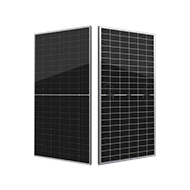 4total results
4total results
Q
What is the overall technological trend of photovoltaics at present?
A
As a photovoltaic module manufacturing company focused on environmental protection and innovation, we closely monitor the development trends of photovoltaic cell technologies. Currently, the main trend in photovoltaic cell technology is the continuous pursuit of improving photoelectric conversion efficiency, reducing production costs, and extending battery life. In this context, we have seen the emergence of two new technologies—TOPCon (Top contact solar cell technology) and HJT (Heterojunction), both aimed at improving the efficiency of photovoltaic cells.
According to theoretical research, the theoretical maximum efficiency of HJT technology is higher than that of TOPCon technology. The theoretical maximum efficiency of HJT technology can reach around 29.2%, higher than the theoretical maximum efficiency of TOPCon technology (approximately 28.7%). However, in terms of market share, due to the relatively high production cost of HJT technology, currently TOPCon technology dominates the market. TOPCon technology is relatively mature in industrial production, with relatively low production costs, and has good stability and performance. Therefore, currently, the photovoltaic cell market is dominated by TOPCon technology, while HJT technology is still in the early stages of development, with a relatively small market share.
In the future, we will continue to monitor the development of photovoltaic technology, iterate and optimize product technology based on technological advantages, and contribute our efforts to the development of clean energy industry technology.
Q
What are the main influencing factors of the output characteristics of photovoltaic modules?
A
Photovoltaic modules, as the core products of our commitment to creating clean energy, play an important role in energy conversion. In their performance, factors such as sunlight intensity, operating temperature, shading effects, degree of pollution, and reflection losses will comprehensively affect the output power of the modules. We focus on producing high-quality, high-efficiency photovoltaic modules to ensure that our products can achieve optimal output power under various environmental conditions. Through continuous optimization of production processes and technological research and development, we strive to ensure that customers obtain photovoltaic products with stable performance, reliability, and durability. We will continue to devote ourselves to promoting the development of clean energy, establishing a more environmentally friendly and sustainable energy system, and creating a clean, sustainable future.
Q
What impact does solar energy have on climate change and sustainable development?
A
Solar energy has a significant impact on climate change and sustainable development. Solar energy is a clean, renewable energy source, the utilization of which can significantly reduce reliance on fossil fuels and thereby decrease emissions of greenhouse gases such as carbon dioxide. By widely applying solar power generation technology, we hope to effectively mitigate the impacts of climate change, reduce global warming rates, and decrease the occurrence of extreme weather events. Solar energy is also a sustainable and abundant energy resource. Utilizing solar power generation not only promotes economic growth but also contributes to social sustainable development. Solar power generation systems have long-term stable operation and revenue cycles, which can enhance the reliability and stability of energy supply, meet the growing energy demand, and inject vitality into economic and social development.
The positive impact of solar energy on climate change and sustainable development is evident. By widely promoting and applying solar power generation technology, we will be able to effectively address the challenges of climate change, promote economic development and social progress, and achieve the common goals of resource rational management and environmental protection. As a company dedicated to the development of the photovoltaic industry, we will continue to strive to contribute to the clean energy revolution and global sustainable development.
Q
What are the prospects of global solar power generation?
A
With the increasing attention to renewable energy and environmental protection issues, solar power generation, as a clean and renewable energy source, is selected by more and more countries and enterprises. With continuous innovation and breakthroughs in solar technology, the efficiency of solar cells continues to improve, and costs continue to decrease, making solar power generation more efficient and economically viable. Many countries worldwide have introduced policies and regulations to support the development of the solar power generation industry, including subsidy policies, tax incentives, and targeted energy policies, promoting the popular deployment and application of solar power generation. Against the backdrop of increasingly severe global environmental problems, solar power generation has broader development prospects and is expected to become one of the main source of energy in the future, playing an important role in global energy transition and environmental protection. Photovoltaic components are the core elements of solar power generation systems, directly affecting the performance, efficiency, and reliability of the system. We provide high-quality and efficient photovoltaic components to help solar power generation systems achieve higher energy conversion efficiency, reduce operational costs, and promote the development of the solar power generation industry.




















